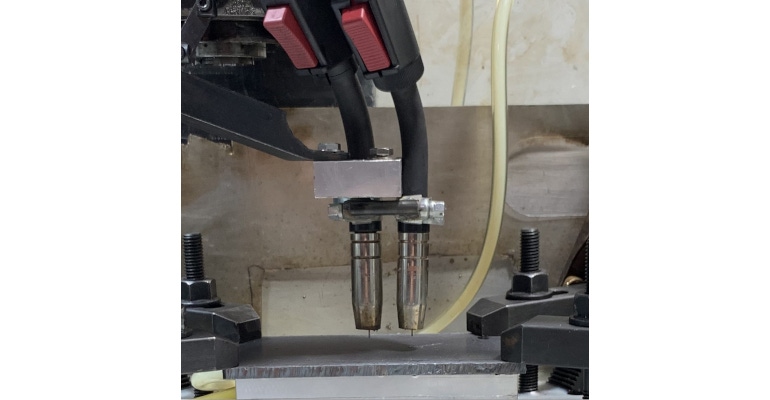How to Combine Two Metals Into One Layer
A new combination of welding and computing allows for the creation of a bimetallic metal that's stronger than either of its individual steel materials on their own.
July 19, 2023

Researchers have created a new 3D-printing process that combines two different welding machines and two types of steel to create a bimetallic material that is stronger than either of the individual metals, they said. A team of scientists from Washington State University (WSU) took inspiration from the structural complexity of trees and bones, which derive strength from how layered rings of different materials interact with each other.
The process involves 3D printing two types of steel in the same circular layer using two welding machines; the result is a material that's 33% to 42% stronger than either metal alone, due in part to pressure caused between the metals as they cool together, the researchers reported. The team, led by WSU professor Amit Bandyopadhyay, used relatively inexpensive tools, which makes their method something that manufacturers and even machine and automotive repair shops can reproduce without complexity, he said.
In fact, with further advancement in design, the process potentially could be used to develop high-performance medical implants or even parts for space travel, said Bandyopadhyay, a professor in WSU’s School of Mechanical and Materials Engineering.
“It has very broad applications because any place that is doing any kind of welding can now expand their design concepts or find applications where they can combine a very hard material and a soft material almost simultaneously,” he said in a WSU Insider post.
Stronger Together Thanks to Bimetallic Metal
To mimic the interdependencies observed in nature with metals, the researchers created a hybrid process by integrating welding equipment commonly found in automotive and machine shops inside a computer numerical control (CNC) machine. The design creates parts using precise computer programming and two welding heads.
In the process demonstrated by the scientists, two welding heads worked on a circular layer sequentially—one following the other—to print two metals. The resulting metals had specific advantages—a corrosion-resistant, stainless-steel core was created inside an outer casing of “mild” steel, similar to what's used to construct bridges or railroads.
The real key to the process comes at the end when the metals cool. During this process, they shrink at different rates, which created an internal pressure that clamped the metals together. The researchers tested the resulting metal and found that it showed greater strength than either the stainless steel or mild steel has on their own, they reported in a paper on their work in the journal, Nature Communications.
Moreover, the process evolves the current state of 3D printing with multiple metals in a welding set-up, which typically requires stopping and changing metal wires. The new method eliminates that step in the process, putting two or more metals in the same layer while the metals are still hot.
New Direction
Overall, the method "fundamentally departs from what’s been possible,” noted Lile Squires, a WSU mechanical engineering doctoral student who worked on the research team.
“This concept has both welders printing, so we can use multiple materials in the same layer itself, creating advantages as they combine,” Bandyopadhyay said. “And it doesn’t have to stop at just two materials. It can be expanded.”
Using the process to strengthen 3D‑printed metal parts layer-by-layer could give automotive shops an option to quickly manufacture strong, customized steel parts such as bimetallic, torque-resistant axle shafts or cost-effective, high-performance brake rotors, the scientists said.
The ability to combine two metals in one process quickly also could be applied to the medical field for manufacturing joint replacements with durable titanium on the outside and an inner material such as magnetic steel with healing properties.
In a similar way, scientists in space exploration could use the process to fabricate structures in space with a high-temperature resistant material on the outside and an inner material layer with cooling properties to moderate the temperature of the structure, the researchers said.
About the Author(s)
You May Also Like



